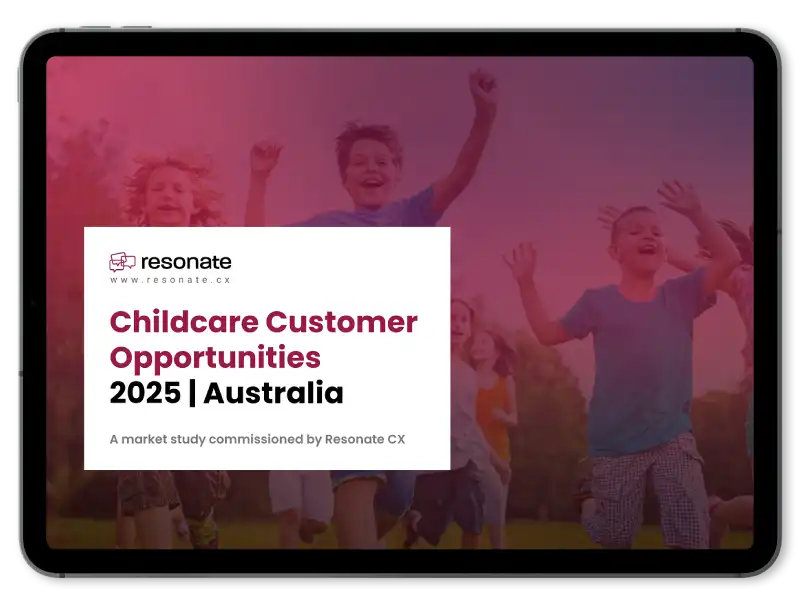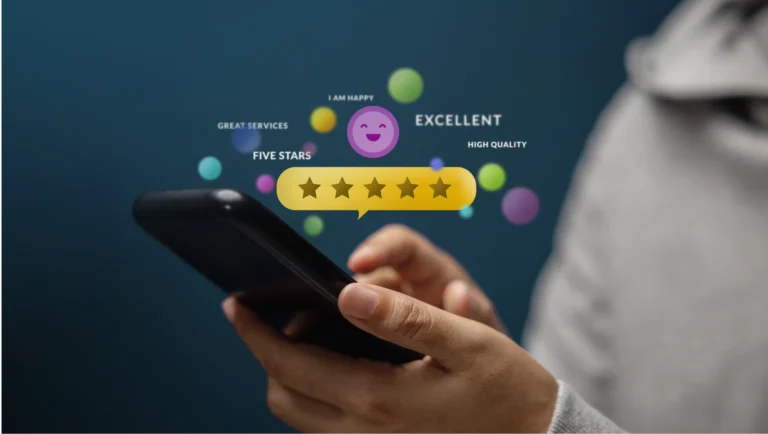Has this happened to you?
You walk into a store brimming with excitement to snag that new gadget you’ve been eyeing. But instead of friendly staff and a smooth shopping experience, you’re met with confusion, long lines. So you tried to check on their online shop, only to see a website that looks like it belongs in a 90s museum. Frustrated and empty-handed, you head straight to your competitor – never to return.
This is the perfect example of a cratered customer experience (CX). Today’s shoppers have tons of options both online and offline. To win them over, you need a great customer experience. It’s the key to turning them from being shoppers at your stores to being fans of your store.
What is Customer Experience (CX) in Retail?
In the bygone era of retail, customer experience was synonymous with friendly service and a clean, well-stocked store. Today, however, CX encompasses the entire customer journey, from the moment a customer stumbles upon your brand online to the post-purchase experience.
Customer experience in retail refers to the overall perception customers have of a brand based on their interactions across various touchpoints.
These touchpoints include the website, mobile app, physical stores, customer service, and social media channels. It’s the sum of all the interactions a customer has with your brand, and it can make or break their decision to shop with you (or again with you).
A positive retail CX ensures customers feel valued, understood, and satisfied throughout their shopping journey.
Why is CX Important for Retailers?
In today’s fiercely competitive retail landscape, where customers have a plethora of choices at their fingertips, providing a stellar customer experience is no longer a nicety – it’s a necessity. Now, CX is a key differentiator. With product selection becoming increasingly commoditized, CX is a powerful way to set your brand apart from the competition. A positive CX can foster customer loyalty and encourage repeat business.
- CX drives sales and conversions
Studies show that a positive CX can lead to increased sales and conversions. Conversely, a negative CX can send customers running to your competitors. - CX builds brand advocates
Studies have reiterated time and time again that CX is one of the most powerful marketing tools. Happy customers are more likely to recommend your brand to their friends and family, essentially becoming brand ambassadors for your business. - CX reduces customer acquisition cost
Acquiring a new customer is typically more expensive than retaining an existing one. By focusing on CX, you can reduce customer churn and save money
Key Components of Successful CX Strategies for Retailers
Delivering a consistently positive customer experience requires a multi-faceted approach. Here are some of the essential building blocks for a winning CX strategy:
1) Understanding Your Customers’ Expectations
Gone are the days of the one-size-fits-all approach. Today’s customers have diverse needs and expectations. To truly excel at CX, you need to cultivate a deep understanding of who your customers are and what they want. This involves:
Importance of customer data and analytics
To meet and exceed customer expectations, retailers must first understand what those expectations are. This requires gathering and analyzing customer data to gain insights into preferences, behaviors, and pain points. Customer data can be collected through various methods such as surveys, feedback forms, and purchase history analysis.
Creating a customer-centric approach
A customer-centric approach puts the customer at the heart of all business decisions. This involves designing products, services, and interactions that prioritize the customer’s needs and desires. By fostering a customer-first culture, retailers can ensure every touchpoint enhances the overall customer experience.
2) Drive Presence with Digital and Online Platforms
In today’s digital age, a strong online presence is crucial for business success. See how to use search engines, social media and online reviews to build a stellar digital CX strategy:
Establish your Search Engine Optimization (SEO) strategy
- Boost visibility and be discoverable!
SEO helps your website rank higher in search engine results pages (SERPs) for relevant keywords. This increases the chances of customers finding you organically when they search for products or services you offer. - Content is King
Create high-quality, informative content that answers customer questions and establishes you as an authority in your field. - Ace your technical SEO
Ensure your website is mobile-friendly, loads quickly, and has a clear, user-friendly structure. Search engines favor websites that offer a good user experience.
Social Media Savvy
- Be Present
Establish a presence on the social media platforms your target audience frequents. This allows for direct interaction with customers and helps build brand awareness. - Engage and Listen
Don’t just post – respond to comments and messages promptly. Actively listen to customer sentiment and address any concerns. - Promote and Showcase
Use social media to showcase your brand personality, share valuable content, and promote special offers. - Community Building
Encourage conversations and foster a sense of community around your brand. - Enhance your Brand’s Reputation
Enhance your brand’s reputation by closing the loop on your online reviews in social media. Track, analyse, and respond to your online reviews.
Stellar Review Profile
- Gather Reviews
Actively solicit reviews from satisfied customers on platforms like Google My Business, Yelp, and industry-specific review sites. - Respond to All Reviews
Thank happy customers and take ownership of negative reviews by offering solutions and demonstrating that you care. - Monitor Reviews Regularly
Regularly monitor review platforms to identify recurring issues and areas for improvement in your CX.
3) Delivering a Seamless Omnichannel Experience
Customers today expect a smooth and consistent experience regardless of how they interact with your brand. This means creating an omnichannel experience that seamlessly integrates online, mobile, and in-store touchpoints. Here’s how:
Consistency across all touchpoints (online, mobile, in-store)
Customers expect a consistent experience regardless of how they choose to interact with a brand. Whether shopping online, via a mobile app, or in-store, the experience should be seamless and cohesive. This requires integrating systems and processes to provide a unified brand experience across all channels.
User-friendly website and mobile app
A retailer’s website and mobile app are often the first points of contact for customers. Ensuring these platforms are intuitive, easy to navigate, and aesthetically pleasing is critical. Features like advanced search options, detailed product descriptions, and high-quality images can enhance the online shopping experience. Customers should be able to easily find what they’re looking for and complete tasks without frustration.
Efficient checkout process
An efficient and hassle-free checkout process is vital to prevent cart abandonment. Simplifying payment options, providing multiple payment gateways, and ensuring a secure transaction process can significantly improve the checkout experience for customers. A slow and cumbersome checkout process can quickly sour the customer experience. Streamline your checkout process to make it quick and efficient.
4) Personalization and Customization
Today’s customers crave a personalized shopping experience. By tailoring the experience to individual needs and preferences, you can create a more engaging and satisfying journey.
Tailoring the shopping experience to individual customers
Personalization involves customizing the shopping experience based on individual customer preferences and behaviors. Utilize customer data to personalize product recommendations, marketing messages, promotions, and tailored content that resonates with the customer. This shows customers you understand their interests and can provide value beyond a generic shopping experience.
Using AI and chatbots for personalized recommendations
Artificial Intelligence (AI) and chatbots play a significant role in delivering personalized experiences. AI algorithms can analyze customer data to suggest relevant products, while chatbots can provide instant assistance and tailored recommendations based on customer queries and preferences. More on this topic later.
5) Technology and Innovation
The retail landscape is constantly evolving, and technology plays a pivotal role in shaping the customer experience. Here’s how retailers can leverage technology to elevate CX:
Leveraging AI, AR, and other technologies to enhance CX
Technological advancements such as AI, Augmented Reality (AR), and Virtual Reality (VR) can significantly enhance the retail customer experience. AI can provide predictive analytics and personalized marketing, while AR and VR can offer immersive shopping experiences, such as virtual try-ons and interactive product demos.
Self-service options and in-store kiosks
Providing self-service options and in-store kiosks can improve convenience for customers. Self-service kiosks allow customers to check product availability, place orders, and make payments without needing assistance, enhancing the overall shopping experience.
6) Excellent Customer Service
Even in the age of automation, human interaction remains a crucial aspect of CX. Here’s how to ensure your customer service shines:
Responsive and helpful staff
Having responsive and knowledgeable staff is critical to providing excellent customer service. Empower well-trained employees to go the extra mile to assist customers effectively and resolve issues promptly to contribute to a positive shopping experience.
Easy-to-reach customer support channels
Offering multiple, easily accessible customer support channels, such as phone, email, live chat, and social media, ensures customers can reach out for help whenever they need it. Quick and efficient resolution of queries and complaints is essential to maintaining customer satisfaction.
Employee training and engagement
Investing in employee training and engagement programs ensures staff are well-equipped to provide exceptional service. Happy and engaged employees are more likely to go the extra mile to assist customers, leading to better overall customer experiences.
7) Building Customer Loyalty
A loyal customer base is the lifeblood of any successful retail business. Here are some strategies to cultivate customer loyalty and keep them coming back for more:
Loyalty programs and rewards
Loyalty programs and rewards incentivize repeat purchases and encourage long-term customer relationships. By offering exclusive discounts, rewards points, and special offers, retailers can foster customer loyalty and boost retention rates.
Creating a sense of community around your brand
Building a sense of community around the brand can enhance customer loyalty. This can be achieved through engaging social media content, hosting events, and creating online forums where customers can share their experiences and connect with the brand and other customers.
8) Investing in a CX Tech Stack
Technology is crucial for gathering customer data, managing interactions, and ultimately improving CX. Here’s how to leverage technology to elevate your CX strategy:
Customer Feedback loops
Implementing customer feedback loops allows retailers to continuously gather, analyze, and act on customer feedback. Implement a system for gathering customer feedback across all touchpoints. This could involve surveys, social media monitoring, or post-purchase emails. This iterative process helps identify areas for improvement and ensures the customer experience evolves based on real customer insights.
Leveraging Data Analytics
Don’t just collect customer data, analyze it! Use data analytics tools to identify trends and customer behavior patterns.
Data analytics tools can provide valuable insights into customer behavior, preferences, and pain points. This will help you tailor your CX strategy based on real customer insights. By leveraging these insights, retailers can make informed decisions to enhance the customer experience and drive business growth.
Challenges in Retail CX
While the potential rewards of a stellar customer experience are significant, achieving and maintaining it requires constant effort.
Creating a seamless and engaging customer experience is no small feat. Retailers face numerous challenges that can impede their ability to deliver a stellar CX. Understanding these obstacles is the first step towards overcoming them.
- Economic Factors
Economic fluctuations, changes in consumer spending habits, and other economic factors can significantly impact customer experience. During economic downturns, customers may become more price-sensitive, prioritizing value over brand loyalty. Retailers must adapt their strategies to accommodate these shifts, such as focusing on value-driven marketing and stocking. - Evolving Consumer Behavior
Consumer behavior is constantly evolving, influenced by trends, technology, and cultural shifts. Retailers must stay ahead of these changes to meet new expectations. For example, the rise of social media and influencer marketing has changed how customers discover and engage with brands. Retailers must leverage these platforms to stay relevant and connected with their audience. - Staff Availability
Staffing challenges, such as high turnover rates and difficulty in hiring skilled employees, can negatively impact customer experience. A lack of available staff can lead to longer wait times, reduced customer service quality, and ultimately, customer dissatisfaction. Investing in employee training and creating a positive work environment can help mitigate these issues. - Supply Chain Disruptors
Supply chain disruptions, such as delays, shortages, and logistical issues, can adversely affect the customer experience. When products are out of stock or deliveries are delayed, customers are left frustrated. Retailers must develop robust supply chain strategies to minimize these disruptions, such as diversifying suppliers and improving inventory management. - Technology Integration
Integrating new technologies into existing systems can be challenging and costly. However, failing to adopt new technologies can put retailers at a disadvantage. Retailers must balance the need for innovation with the practicalities of implementation, ensuring that new technologies enhance rather than hinder the customer experience.
Measuring and Improving Retail CX
So, you’ve implemented a CX strategy and tackled the common challenges – fantastic! But how do you know if it’s working? Here’s how to measure and continuously improve your retail CX:
What are the key CX metrics?
These CX metrics provide insights into different aspects of the customer experience, such as overall satisfaction, loyalty, and ease of interaction.
- Customer Satisfaction Score (CSAT)
Measures customer satisfaction with a specific interaction. - Net Promoter Score (NPS)
Measures customer loyalty and likelihood to recommend your brand. - Customer Effort Score (CES)
Measures how easy it is for customers to complete tasks. - Customer Lifetime Value (CLTV)
Predicts the total revenue a customer will generate over their relationship with your brand.
Importance of Customer Feedback
Customer feedback is invaluable for understanding the strengths and weaknesses of the current customer experience. Regularly gathering and analyzing feedback helps retailers identify areas for improvement and respond to customer needs.
How are they collected?
There are multiple ways to collect customer feedback. Retailers should use a mix of these methods to capture a comprehensive view of the customer experience.
- Surveys
Send surveys via email, SMS, or in-store kiosks to gather feedback on specific aspects of the customer experience. Send automated emails and feedback forms after purchases or customer service interactions to gather feedback on the experience. - Social media monitoring
Track brand mentions on social media platforms to identify customer sentiment and areas for improvement.
How are they used?
Once collected, customer feedback and CX metrics must be analyzed to derive actionable insights. Data analytics tools can help identify patterns and trends, providing a deeper understanding of customer behavior and preferences. Retailers can then use these insights to make informed decisions and implement targeted improvements.
- Inner Loop
Frontline team closing immediate problems based on the feedback - Outer Loop
Common themes from the feedback to build your strategy and prioritization
Tracking CX metrics
Tracking CX metrics over time allows retailers to monitor the effectiveness of their CX strategies and make adjustments as needed. Regular reporting and analysis ensure that CX remains a priority and that improvements are continually made to enhance the customer experience.
Case Studies of Successful CX Strategies
Examining successful CX strategies from leading retailers can provide valuable insights and inspiration. Here are three case studies that highlight effective customer experience initiatives:
Rebel
This case study is about how Rebel, a sporting goods retailer, used customer feedback to improve their business. It discusses Rebel’s customer centric approach and the importance of leadership buy-in.
The case study highlights Rebel’s use of a customer feedback program, loyalty program, and data analysis to improve customer satisfaction. It also details how Rebel uses a test-and-learn methodology to measure the success of their initiatives.
Some of the key results Rebel achieved include increased customer engagement, higher NPS scores, and a more customer-centric workforce.
Read the Rebel CX Case study here.
Walmart
This case study discusses Walmart’s focus on the customer experience and how they use customer feedback to improve operations.
Walmart believes that a great customer experience is key to success. In order to achieve this, they collect feedback from customers and use it to inform their decisions.
They have a program in place to gather customer feedback and use software to analyze this data. This feedback is then used to improve operations and decision-making.
Read the Walmart CX Case Study here.
BCF
This case study explains the CX program for BCF, a large Australian outdoor retail chain. This discusses BCF’s collaboration with Resonate CX to improve their CX program.
BCF believes that a strong CX program is a key to their competitive advantage. They use customer feedback to inform product and service decisions.
This case study also mentions the importance of real-time dashboards and analytics in understanding and improving store performance.
Conclusion
Customer experience is no longer a nicety; it’s the battlefield where retailers win or lose. Retail customer experience is a critical component of success in today’s competitive market. By implementing a well-rounded CX strategy that prioritizes understanding customer needs, delivering a seamless omnichannel experience, and fostering loyalty, retailers can create a competitive advantage. The challenges are numerous, but with a strategic approach and a commitment to excellence, retailers can transform their CX and drive long-term success.







